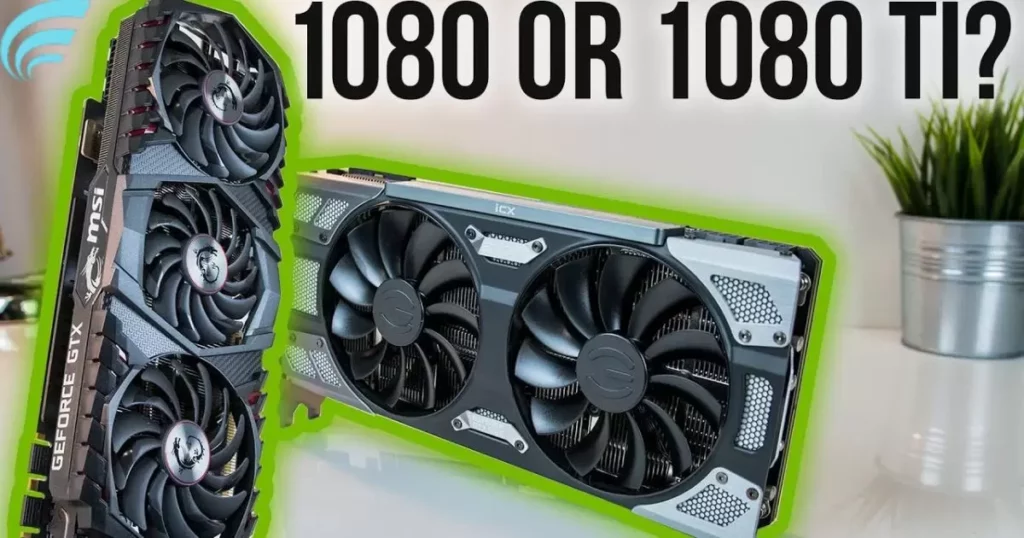On graphics cards, Ti is like a magic word for more power. It means turbocharged or titanium, making your graphics card work faster and better. It’s like upgrading your computer to give you smoother games and cooler visuals. So, if you see Ti on a graphics card, it’s like adding a super engine for a fantastic ride in the world of graphics.
Curious about upgrading your graphics experience? Ever wondered: What does the Ti stand for in graphics cards? Dive into our guide to uncover the magic behind this little Ti and discover how it transforms your visuals. Upgrade your gaming or creative setup; let’s demystify the tech jargon and take your graphics to the next level.
Unraveling the mystery of Ti in graphics cards is the secret sauce for supercharging your visuals. Ti can be your tech sidekick, standing for Turbocharged or Titanium, signaling a graphics upgrade like never before. It’s like adding a touch of magic to your computer, propelling your gaming and creative adventures to a whole new level. So, when you spot that Ti, get ready for a graphics journey beyond the ordinary.
The Origin of Ti in Graphics Cards
In the realm of graphics cards, the Ti designation traces its roots back to NVIDIA’s creative nomenclature. Initially standing for titanium, it denoted a step up from standard models, suggesting superior performance and capabilities.
As technology progressed, the meaning of Ti evolved beyond just titanium. It morphed into a symbol for enhanced versions of existing GPUs, indicating a mid-cycle refresh with improved clock speeds, additional CUDA cores, and sometimes upgraded memory configurations.
Today, Ti has become synonymous with an upgrade in the graphics card world. It signifies a turbocharged variant, promising users a boost in performance and a step closer to cutting-edge graphics capabilities.
Enhanced Performance
Enhanced performance is like giving your computer a turbo boost. It’s all about making everything work faster and smoother.
Increased clock speeds and extra processing units, like CUDA cores, are the superheroes behind enhanced performance. They ensure quicker calculations and better handling of complex tasks.
Whether you’re gaming or working on creative projects, enhanced performance means a more responsive and efficient computer. It’s like having a high-performance engine under the hood, ready for any task you throw its way.
Performance Benchmarks
Performance benchmarks are like report cards for your computer, telling you how well it performs in various tasks. They measure speed, power, and efficiency, giving you insights into your system’s capabilities.
Whether you’re a gamer or a content creator, performance benchmarks help you make informed decisions. They show how your computer handles games, applications, and multitasking, guiding you in choosing upgrades or optimizing settings for an optimal experience.
Benchmarks aren’t mere numbers; they shape your computer’s real-world performance. Elevated benchmarks signal smoother gameplay, faster rendering, and an overall snappier computer. Wondering what to do with your old graphics card?becomes relevant at this juncture. Instead of letting it gather dust, consider repurposing or donating your old GPU.
This way, you not only optimize your current system but also contribute to someone else’s computing experience. It’s a sustainable approach, ensuring that even retired graphics cards find a new purpose, extending their lifecycle, and minimizing electronic waste.
NVIDIA GeForce GTX 1080 vs. GTX 1080 Ti

When it comes to these two graphics powerhouses, the NVIDIA GeForce GTX 1080 and GTX 1080 Ti, there are notable differences that can impact your gaming and creative experiences.
Table: Key Features Comparison
| Feature | GTX 1080 | GTX 1080 Ti |
| CUDA Cores | 2560 | 3584 |
| Memory Configuration | 8GB GDDR5X | 11GB GDDR5X |
| Memory Speed | 10 Gbps | 11 Gbps |
| Performance Improvement (%) | – | Up to 35% |
In this side-by-side comparison, the GTX 1080 Ti shines with its higher number of CUDA cores, larger memory configuration, and faster memory speed. This translates into a significant performance improvement of up to 35%, making the GTX 1080 Ti a powerhouse for those seeking top-tier graphics performance. Whether you’re a gamer or a content creator, understanding these differences helps you choose the GPU that aligns with your specific needs and desired level of performance.
FAQs
What does the Ti signify in graphics cards?
The Ti stands for turbocharged or titanium, indicating an upgraded version with enhanced performance.
Does Ti impact performance?
Yes, it often signifies improved performance, with higher clock speeds, additional CUDA cores, and enhanced features compared to the non Ti counterpart.
Are all graphics cards labeled Ti?
No, not all graphics cards have a Ti designation. It’s specific to NVIDIA’s product lineup and is not a universal term used across all brands.
Is Ti essential for gaming or creative tasks?
While not essential, a Ti model can provide a performance boost, making it preferable for gamers and content creators seeking higher capabilities.
Can I use a non-Ti graphics card for gaming?
Non-Ti graphics cards still offer great performance. The Ti designation simply indicates an extra level of power and capabilities for those seeking top-tier performance.
Conclusion
In wrapping up our graphics card journey, it’s clear that understanding What does the Ti stand for in graphics cards? is like unlocking the secret behind enhanced performance. Whether it’s Turbocharged or Titanium, the Ti signifies an upgrade, like getting a souped-up engine for your visuals.
So, next time you’re eyeing a graphics card, look for that magical Ti to ensure you’re stepping into a realm of superior graphics and smoother experiences.
In the dynamic landscape of graphics processing, the Ti isn’t just a letter; it’s a promise of tech excellence. It’s the key to elevating your gaming or creative setup, offering a performance boost that transcends the ordinary. Embrace the power of Ti for a graphics adventure beyond expectations.











